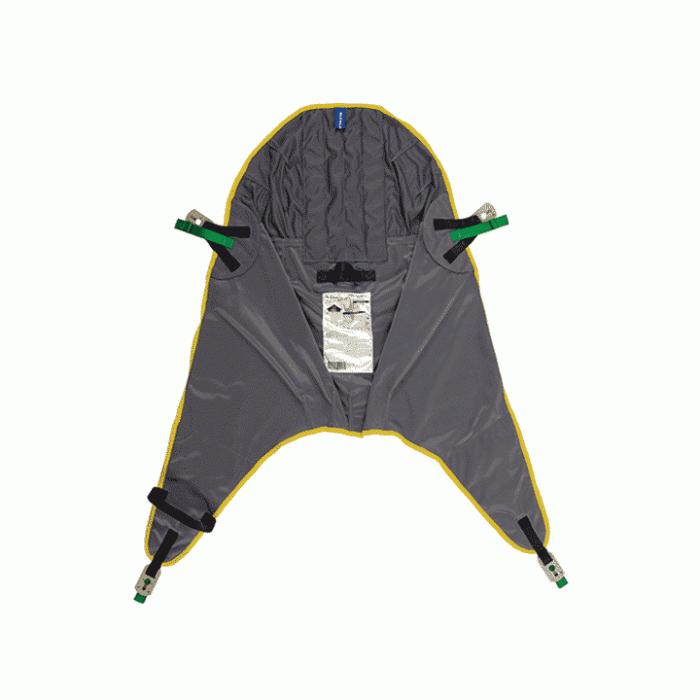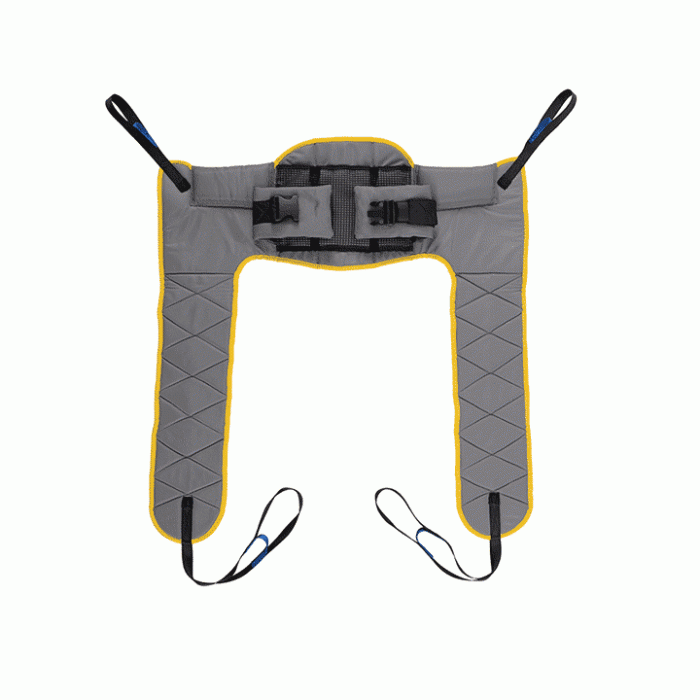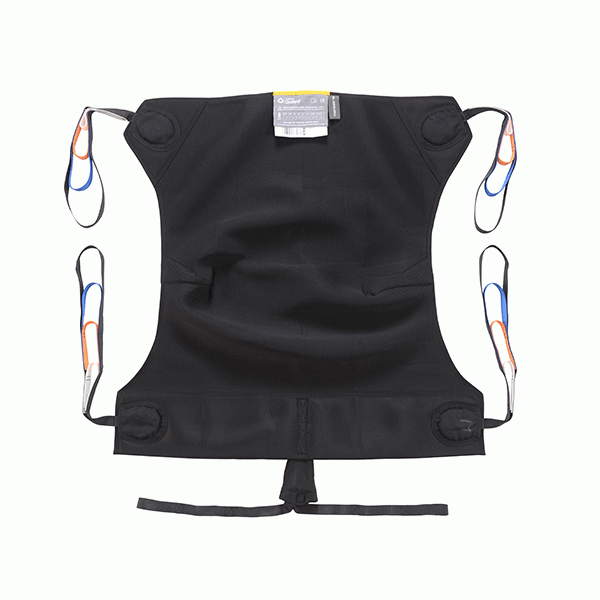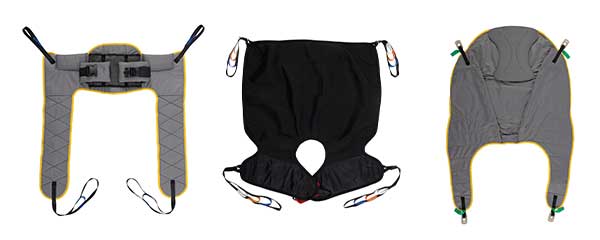
What are the different types of slings for hoists?
10 Minute Read
Patient slings are used to transfer individuals, with lifting equipment such as mobile hoists and ceiling hoists. Therefore, it is important to understand the different types of slings and the factors you need to consider before making your sling selection.
The below video covers some of the different types of slings available and outlines their typical applications. This is just a general overview with many factors such as shape, size and fabric to consider.
Request your free equipment brochure which includes a separate sling brochure with all the different patient slings available.
Different types of slings:
Below is a short explanation of just some of the different types of slings available. Please contact our helpful team if you need any assistance.
1. Quickfit / General purpose sling
The Quickfit sling is a general-purpose sling used for many transfers and service users. It is easy to fit with divided leg sections. This sling will suit around 85% of clients. It has become one of the most recognised sling choices available today.
The Quickfit sling is good for the following transfers:
- Chair to chair
- Chair to commode/toilet
- Floor to bed/chair
- Bed to chair/chair to bed
- Into the bath (fabric dependent)
- Rehab / Assisted standing
2. Comfort, Full Back and Full Body Slings
These slings are easy to fit and contoured to fit most clients. It offers excellent full-body support, and the correct size will give full protection for users who go into extension, have involuntary movements or have behavioural challenges.
These slings are good for the following transfers:
- Chair to chair
- Chair to commode/toilet
- Floor to bed/chair
- Bed to chair/chair to bed
- Into the bath (fabric dependent)
3. Toileting / Access Sling
The Access sling has been specifically designed to facilitate the toileting process by allowing excellent access to clothing for personal care whilst allowing the service user to remain dignified. It is an easy to fit sling and fully padded for additional comfort. Due to the shape of this type of sling, a thorough risk assessment must be carried out, as it can be unsafe for some service users. This is not a general-purpose sling and will only suit around 25% of clients.
These slings are good for the following transfers:
- Chair to chair
- Chair to commode/toilet
- Bed to chair/chair to bed (from a seated position only)
4. Stand Assist / Standing Sling
The standing sling is suitable for those users who have a greater degree of weight-bearing ability. It can provide a quick and effective transfer, as well as excellent access for personal care. This type of sling should be used with an active hoist or stand aid.
Stand Aid Slings are good for the following transfers:
- Chair to chair
- Chair to commode/toilet
- Bed to chair/chair to bed (from/to seated position only)
- Rehab / Assisted Standing
5. Bathing slings
Bathing slings are determined by their material rather than a particular style, which is a common misconception. There are a variety of different slings, made from either spacer or net material.
Space material is a cushioned and breathable 3D woven spacer fabric offering high permeability and good drainage. The two-way stretch characteristics enable this material to adapt to the contours of the user, resulting in high levels of comfort and support. As well as a bathing sling, the spacer material is used for the all-day or in-situ slings.
Polyester net is a mesh variant of the standard polyester fabric. It is ideally suited for bathing and/or swimming pool environments due to its quick drainage and drying properties.
Bathing sling transfers vary depending on the type of sling.
6. Disposable Slings
Disposable slings are made from polyester material specifically developed for single use. This helps to reduce the risk of cross-infection from one service user to another. Slings made from this fabric must not be laundered or exposed to water to maintain their integrity.
Disposable slings come in specific styles from the Comfort to Quickfit and even the Stand Assist Sling.
Disposable sling transfers vary depending on the type of sling.
As you can see, different types of slings provide different levels of support for transfers. Assessing your user’s needs through a risk assessment will help you identify the type of sling required.
Medaco is a trusted partner of Joerns Healthcare who manufactures the Oxford range of slings. A high-quality sling range, built to last, with multiple types and styles designed to aid care staff, to move and transfer users with limited or no mobility.










